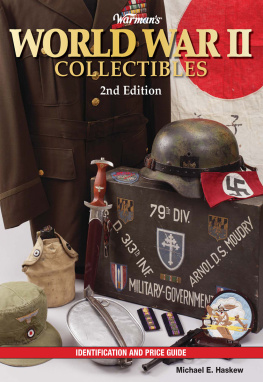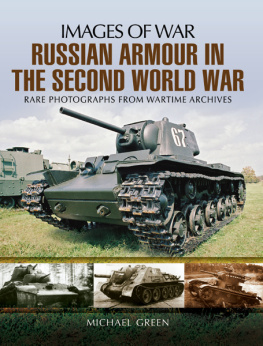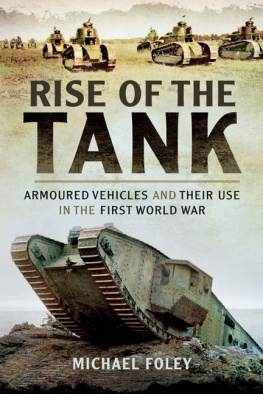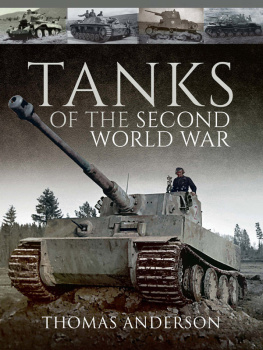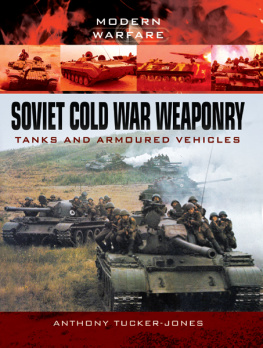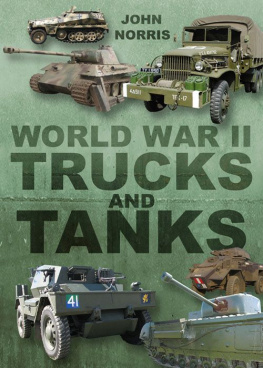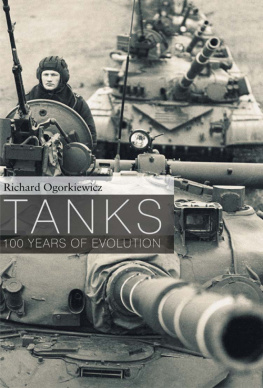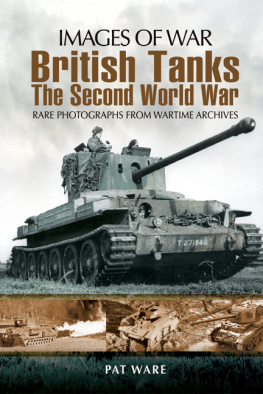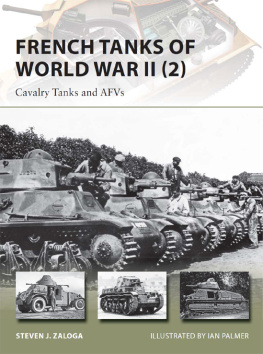Haskew - The worlds greatest tanks: an illustrated history
Here you can read online Haskew - The worlds greatest tanks: an illustrated history full text of the book (entire story) in english for free. Download pdf and epub, get meaning, cover and reviews about this ebook. City: London, year: 2016;2015, publisher: Amber Books Ltd, genre: History. Description of the work, (preface) as well as reviews are available. Best literature library LitArk.com created for fans of good reading and offers a wide selection of genres:
Romance novel
Science fiction
Adventure
Detective
Science
History
Home and family
Prose
Art
Politics
Computer
Non-fiction
Religion
Business
Children
Humor
Choose a favorite category and find really read worthwhile books. Enjoy immersion in the world of imagination, feel the emotions of the characters or learn something new for yourself, make an fascinating discovery.

The worlds greatest tanks: an illustrated history: summary, description and annotation
We offer to read an annotation, description, summary or preface (depends on what the author of the book "The worlds greatest tanks: an illustrated history" wrote himself). If you haven't found the necessary information about the book — write in the comments, we will try to find it.
Haskew: author's other books
Who wrote The worlds greatest tanks: an illustrated history? Find out the surname, the name of the author of the book and a list of all author's works by series.
The worlds greatest tanks: an illustrated history — read online for free the complete book (whole text) full work
Below is the text of the book, divided by pages. System saving the place of the last page read, allows you to conveniently read the book "The worlds greatest tanks: an illustrated history" online for free, without having to search again every time where you left off. Put a bookmark, and you can go to the page where you finished reading at any time.
Font size:
Interval:
Bookmark:
GREATEST
TANKS
AN ILLUSTRATED HISTORY
MICHAEL E. HASKEW

This digital edition first published in 2015
Published by
Amber Books Ltd
7477 White Lion Street
London N1 9PF
United Kingdom
Website: www.amberbooks.co.uk
Appstore: itunes.com/apps/amberbooksltd
Facebook: www.facebook.com/amberbooks
Twitter:
Copyright 2015 Amber Books Ltd
ISBN: 978-1-78274-264-7
All rights reserved. With the exception of quoting brief passages for the purpose of review no part of this publication may be reproduced without prior written permission from the publisher. The information in this book is true and complete to the best of our knowledge. All recommendations are made without any guarantee on the part of the author or publisher, who also disclaim any liability incurred in connection with the use of this data or specific details.
Picture Credits:
Photographs:
Art-Tech/Aerospace: 8, 13, 17, 29, 33, 37, 41, 45, 49b, 57, 64, 85, 93, 101, 109, 117b, 121b, 125, 130, 151, 171, 175, 191, 199, 207
Cody Images: 7, 25, 49t, 61, 69, 73, 113, 117t, 129, 139, 147, 155, 159, 167, 179, 183, 187, 219
Narayan Sengupta: 135b
Shutterstock: 211 (Meoita)
TopFoto: 97 (RIA Novosti)
Ukrainian State Archive: 21, 53, 76, 77b, 81, 105
U.S. Department of Defense: 6, 89, 143, 163, 195, 203, 214, 215
Artworks:
Unless listed below all artworks are Art-Tech/Aerospace
Alcaniz Fresons S.A.: 18
Oliver Missing: 20, 74, 75, 77t, 78, 79, 104, 135t

www.amberbooks.co.uk
Combining striking power and mobility, the tank has the potential to truly dominate the battlefield a potential that has persisted during almost a century of warfare. As the technology of the tank evolves, its capabilities will only be enhanced.
Although its origin may be traced to Leonardo da Vinci, or even to the ancient Greek phalanx, the tank is today a thoroughly modern weapon. Its precision technology maintains the cutting edge of military land warfare doctrine. Admired for its combat capability and feared for its awesome capacity to deal death, the tank holds a grip on the collective psyche of military planners the world over.
From the beginning, the idea of armoured warfare drove innovation and those who conceived of the lumbering behemoths that rumbled over and through trench lines like fire-breathing dragons during World War I provided only a foretaste of the destructive capacity that was yet to come. Although primitive, the tanks of World War I set the stage for the future of armoured land battles.

The Bradley M2/M3 fighting vehicle was years in development and roundly criticized due to its cost and limited armour protection. However, it proved its worth as a combat troop carrier and in battle against Iraqi tanks during Operation Desert Storm and Operation Iraqi Freedom.
Between the world wars, British officer and military strategist J.F.C. Fuller championed the development of the tank and others joined the inexorable tide of influence that slowly gained sway among the military establishments of great nations. Mechanization came to full flower during World War II and the legendary military minds of Heinz Guderian, Erwin Rommel, George S. Patton and Georgi Zhukov were among those who saw the potential for armour in rapid exploitation of an enemy weakness, acting as steel cavalry.
World War II itself was a global proving ground for advances in firepower, mobility and armour protection. Both the Allies and Axis fielded ever more powerful tanks and the resulting clashes are remembered as epic struggles. Kursk, Arracourt, El Alamein and the Battle of the Bulge continue to resonate among historians and those few living veterans who remember the day of the Tiger, the Panther, the T-34 and the Sherman.

During the period of rapid rearmament under the Nazi regime in the 1930s, German soldiers load PzKpfw II tanks onto waiting transporters. The PzKpfw II and other German tanks provided the armoured ground thrust of the Blitzkrieg that conquered much of Europe in the early days of World War II.
During the early days of the Cold War, the tank became a symbol of both freedom and repression. The Soviet Union exported its battle tested tanks in great numbers to Warsaw Pact nations and client states, while the United States and Great Britain led the West in its search for an armoured vehicle that might stand up to an avalanche of armour from the East. Land warfare in the twentieth century became synonymous with the tank. It was inconceivable that a successful ground campaign might be waged without tanks and their supporting mobile infantry, riding into combat in armoured battle taxis. The day that had dawned in No Mans Land had reached high noon.
As early as 1918, German Field Marshal Paul von Hindenburg observed, The fact that the tanks had now been raised to such a pitch of technical perfection that they could cross our undamaged trenches and obstacles did not fail to have a marked effect on our troops.
The thorough defeat of inferior Iraqi T-54/55, T-62 and T-72 tanks by the M1A1 Abrams, Challenger and other modern fighting vehicles of the coalition that ejected Saddam Hussein from Kuwait in 1991 and then toppled his regime in 2003 brought the absolute potential for the tank to determine the outcome of a land battle sharply into focus. The time, money and even lives that had been devoted to the advancement of armoured technology had suddenly seized the limelight.
Routinely weighing more than 50 tonnes (49.2 tons) and mounting fearsome weapons of 120mm (4.7in) or more, the main battle tank has become the focus of land warfare, first during an age of mutually-assured destruction at the height of the Cold War, then through the era of proxy wars in the Third World and eventually into the day of the despot, when civilized nations opposed the brutality of tyrants.
The tank has continued to evolve with the latest in fire control, weapons systems, thermal imaging, composite armour and computerization. Todays tank is capable of tracking multiple targets simultaneously, defending itself against the latest anti-tank weapons and ordnance fired by enemy armoured vehicles and bringing its crew home safely from the maelstrom of the modern battlefield.
From tank versus tank combat to urban warfare and counter-insurgency, the tank has adapted. In close quarters and facing low-technology weapons such as the improvised explosive device (IED), or on the open desert or plain confronting the finest military hardware of an enemy, the tank will continue to evolve, influence the tactical dialogue of ground commanders and endure.

This Tiger I heavy tank raises a cloud of dust along a dirt road. The Tiger performed extremely well against Allied tanks of all types. Its main weakness was its slow speed and lack of manoeuvrability
Font size:
Interval:
Bookmark:
Similar books «The worlds greatest tanks: an illustrated history»
Look at similar books to The worlds greatest tanks: an illustrated history. We have selected literature similar in name and meaning in the hope of providing readers with more options to find new, interesting, not yet read works.
Discussion, reviews of the book The worlds greatest tanks: an illustrated history and just readers' own opinions. Leave your comments, write what you think about the work, its meaning or the main characters. Specify what exactly you liked and what you didn't like, and why you think so.


